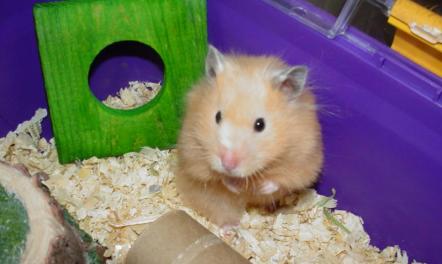You are here:
- Home »
- Teaching science »
- Caring for animals in the classroom
Caring for animals in the classroom
Animals are brought into school classrooms or early childhood education (ECE) centres for a number of reasons including:
- classroom or centre pets
- school or ECE centre pet days
- science or biology teaching
- science fair projects
- visits as loved pets or working animals.
Animals of all kinds play an important part in the lives of people and attitudes towards other animals depend to a great extent on knowledge acquired in the formative years. If students (and young children) are encouraged, under sympathetic guidance, to study, handle and look after animals they should develop a positive, caring attitude. For many children, an ECE centre or school may be the only place where this experience can be gained and where respect for animals can be learned.
NZ Curriculum links
Animals in schools and early childhood centres provide a number of educational benefits linked to The New Zealand Curriculum
New Zealand Curriculum Science L1/2
Living world
- Life processes – Recognise that all living things have certain requirements so they can stay alive.
- Ecology – Recognise that living things are suited to their particular habitat.
Nature of science
- Investigating in science – Extend their experiences and personal explanations of the natural world through exploration, play, asking questions, and discussing simple models.
Provide opportunities for detailed observation and investigation of the animal's: way of life, structure, behaviour, growth, and life history. Observations of animal behaviour and discussions about reproduction, social interactions, and life history lead to an appreciation of the material and social needs of animals – including human beings.
New Zealand Curriculum Science L3
Living world
- Ecology – Explain how living things are suited to their particular habitat and how they respond to environmental changes, both natural and human induced.
Provide opportunities for identification and investigation of the normal range of environmental factors influencing living animals emphasising an appreciation of the importance of environmental protection.
Nature of science
- Investigating in science – Build on prior experiences, working together to share and examine their own and others’ knowledge.
- Participating and contributing – Use their growing science knowledge when considering issues of concern to them.
Provide opportunities for shared responsibility for animal welfare to establish caring attitudes, and introduce the potential of life-long interests involving animals.
Animals most suitable for classroom or early childhood education (ECE) centre care
Whether animals being kept in ECE centres and schools are those defined by the Animal Welfare Act 1999 or by the Wildlife Act 1953 or are invertebrate animals, they should all be given the same respect and attention to ensure that their needs are met.
This illustrated resource gives educators legal, ethical, and practical information on caring for small animals in early childhood education centres and schools.
- Axolotls
- Birds
- Field crickets
- Goldfish
- Guinea pigs
- Mice
- Rabbits
- Rats
- Slaters
- Snails (garden)
- Terrapins
- Worms (compost)
- Other classroom and early childhood (ECE) pets
Keeping animals such as possums, chinchillas, or ferrets should be actively discouraged because they have been declared to be pests. Take every opportunity to develop a sense of responsibility in children and students towards declared pests.
Further information
This section of the SPCA Kids website has information on how to care for companion animals that you may have in your classroom or ECE centre.
Separate pages for each animal discuss:
- nutrition
- environment
- health
- behaviour
- mental wellbeing.
Copyright
The text and illustrations for this online edition of Caring for animals: A Guide for teachers, early childhood educators, and students (published on Te Kete Ipurangi for the New Zealand Ministry of Education in 2005) is copyright © Crown 2005. All rights reserved.
Content has been adapted for the web from the printed version, originally published in 1999 by Learning Media Limited for the Ministry of Education. Although no longer available this publication may still be available in some schools.
A PDF file version was created in 2021.
![]() Caring for Animals
(PDF 1 MB)
Caring for Animals
(PDF 1 MB)



